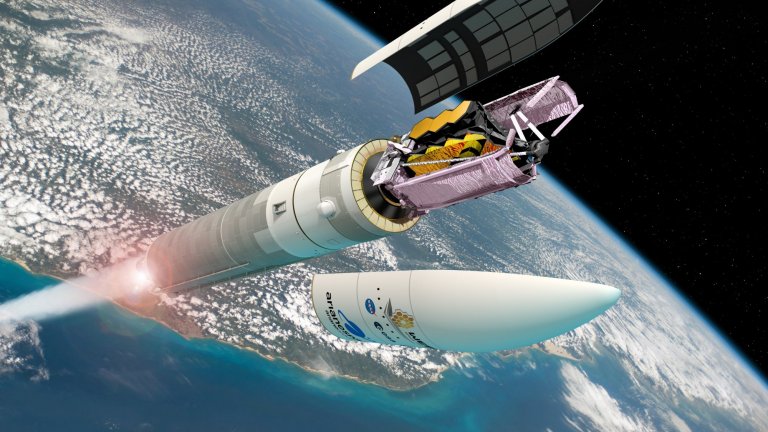
© ESA / D. Ducros
Scientific news
After years of delay, the largest and most powerful space telescope ever designed took off for space on 25 December. It should pave the way for discoveries and observations at an unprecedented distance and accuracy for astronomers.

© ESA / D. Ducros
Seeing further and more accurately, and even going back in time to understand how planets and galaxies are formed...is clearly any astronomer’s dream, but we still need instruments to push the limits of our knowledge. This year, 25 December was like a Christmas present for star and galaxy hunters. Indeed, on this day after a take-off that was repeatedly postponed – the first launch was initially scheduled for… 2008 – and depended upon the weather conditions, the James Webb Space Telescope (JWST) took off for space from the Kourou Space Centre in French Guiana.
On 8 January, the deployment of the telescope into space, a risky step that was a first for such a large object, went smoothly.
The JWST, the most powerful telescope ever designed – one hundred times more powerful than Hubble which has been amazing us with its images since 1990 – will be in orbit 1.5 million kilometres from Earth, or four times the distance between the Earth and the Moon. With its 6.50-metre mirror, it is also the largest space telescope to date. Several CNRS teams are involved in this NASA-led project which will allow exceptionally distant and ancient galaxies to be observed. Scientists particularly hope to observe the heart of galaxies with a supermassive black hole, but also exoplanets that will be detected and observed by coronagraphs, i.e., instruments that “mask” the light of a star to make the neighbouring planets more visible, which are inevitably less luminous. One of these instruments was also designed by Lesia (Laboratory for Space Science and Astrophysical Instrumentation) in Meudon.
While there is already a very long queue of many teams and laboratories wishing to use the JWST for their observations, we are inviting you to discover this space telescope with an animated film which presents it from every angle. The launch was broadcast live from Cité de l’espace on 25 December and you can see the launch video here (NASA’s Youtube channel, take-off from 01:22:00).
Our work is guided by the way scientists question the world around them and we translate their research into images to help people to understand the world better and to awaken their curiosity and wonderment.